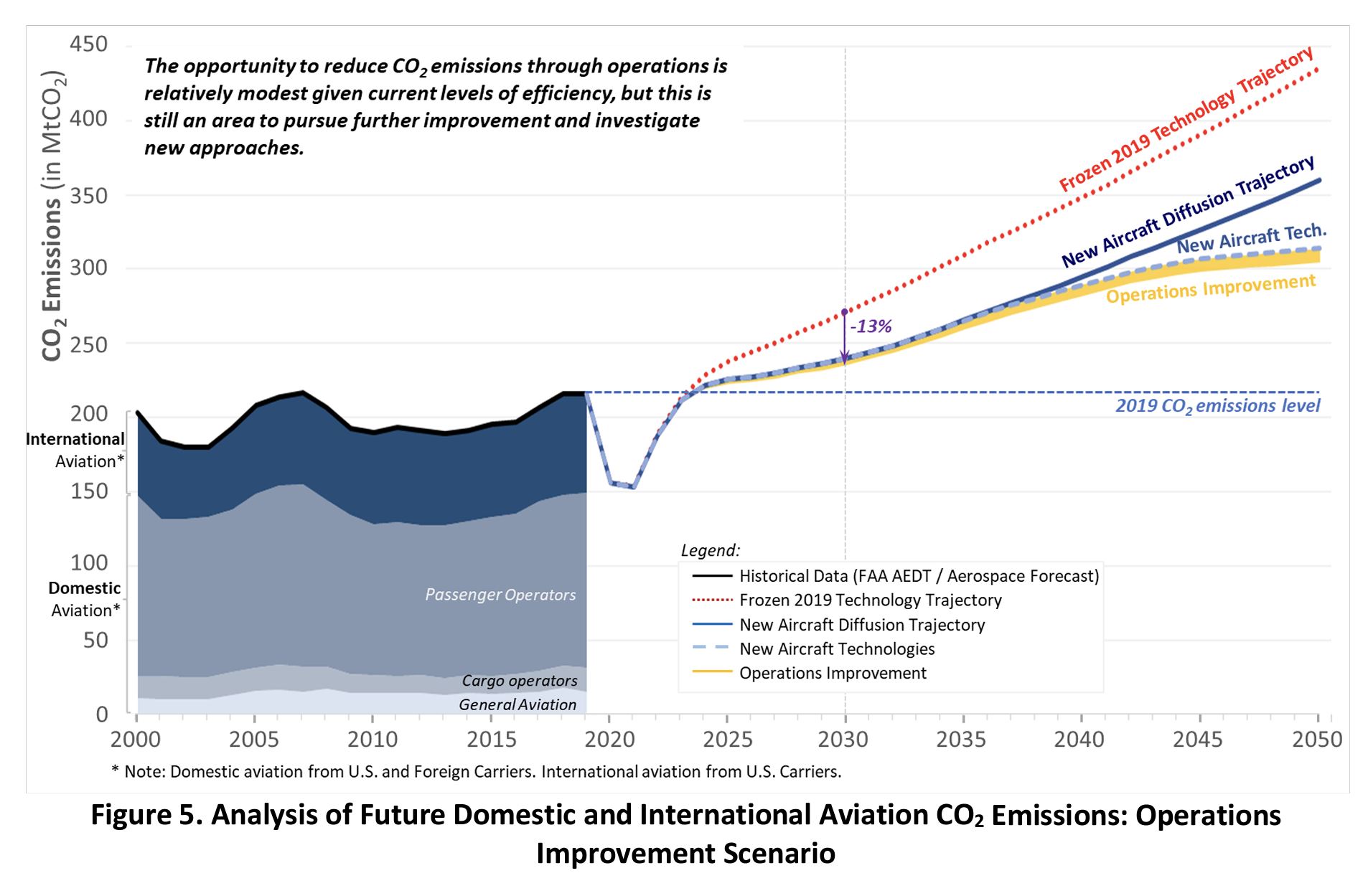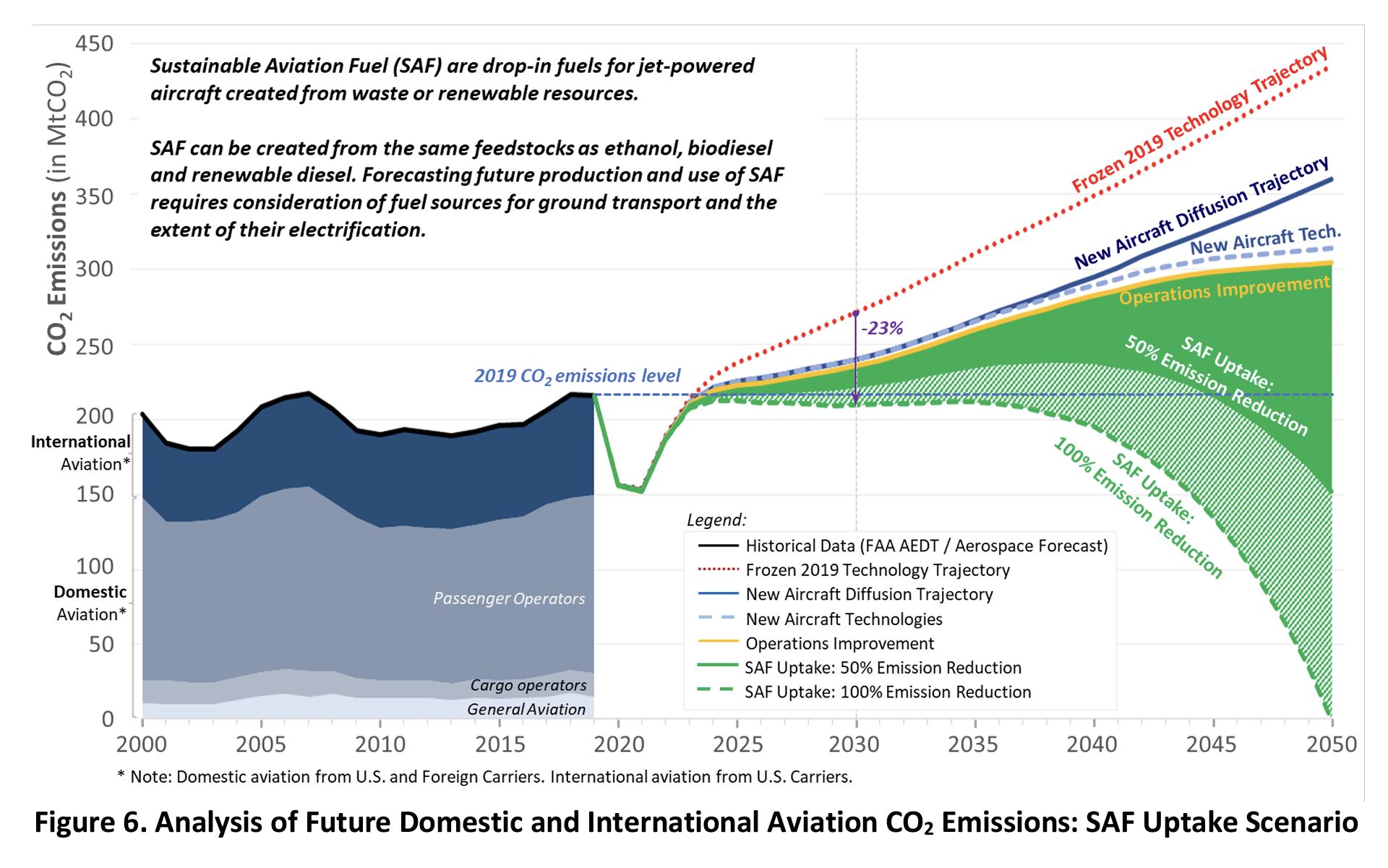 |
Save Our Heritage |
|
Protecting the Birthplace of the American Revolution, the cradle of the Environmental Movement, and the Home of the American Literary Renaissance |
|
The potential for private luxury jets with low climate impactJan 1, 2024There is some discussion whether the hangar expansion plans at Hanscom Field could be conditional on their use for low-carbon aircraft. The feasibility of such a proposal is discussed. The USA and the Commonwealth of Massachusetts both have Climate Action plans that specify net zero GHG emissions for aviation by 2050. These plans also have intermediate goals for 2035. Greenhouse gas emissions due to private luxury aviation are affected by three factors: the volume of use, the efficiency of aircraft, and the greenhouse gas associated with fuel consumption. All plans are based on an expectation of eventual availability of low-carbon aircraft. Aviation related fuels have no known replacement by 2035. Improvements in aviation efficiency on the order of a few percent are expected by 2035 as aircraft are replaced with more efficient models. Therefore the ONLY possible way GHG emissions can be either limited or reduced by 2035 is by limitations on volume of air travel. Consider the following highly optimistic plan published in the US National 2021 Aviation Action Plan: In this Climate forecast, despite the stated goal to reach net zero by 2050, note that the emissions are not decreasing, but instead are inexorably increasing with time. The red line is the expected growth without technical improvement. The growth in emissions is entirely due to predicted increases in air travel. The additional lines on the chart, which depend on technology improvements that are uncertain, represent improvements in efficiency, and include the introduction of some electrical aircraft by 2045. Also, note that the measurements on the chart only include CO2, but the GHG impacts of jet travel include other factors; to get total CO2e impacts these number must be approximately doubled.1 Hydrogen powered aircraftThe Federal Action Plan states that “Simply put, there is no realistic option that could replace liquid fuels in the commercial aircraft fleet in the coming decades.” The use of hydrogen for aviation fuel remains theoretical, with significant technical challenges. There are two proposed approaches: Fuel cell and combustion. Combustion of hydrogen is not compatible with existing aircraft engine technologies, requiring the development of entirely new technology engines. Alternatively, hydrogen can be consumed in Fuel cells to generate electricity to power electric engines. In either approach, hydrogen is very attractive because it generates zero CO2 during consumption. These hypothetical technologies could, in theory, replace short-hop commercial jets. However, even if they could be proven in a decade, they would not be able to comprise a measurable fraction of the aircraft fleet by 2050. The federal report notes that the “timeline is insufficient to meet the U.S. goal of net-zero emissions by 2050.” Sustainable Aviation FuelTo develop a net zero scenario, the federal plan adds a hypothetical plan assuming Sustainable Aviation Fuels (SAF) can be developed and mass produced. In principle, such fuel can substitute for jet fuel in existing aircraft without modification. The federal plan uses this hypothetical supply of clean fuel to get to net zero, as shown: The graph shows that essentially all of the GHG reductions that are planned under this hypothetical scenario are due to zero-carbon sustainable fuels. If zero-carbon SAF is not available, then the GHG contributions of Aviation will not decrease, but will increase by over 30%. SAF as currently envisioned has three potential sources: derived from agricultural sources, derived from waste products, or synthetic fuel created from low carbon energy. Each of these types of fuel generate CO2 when burned, but they provide benefit by absorbing or canceling some CO2 when they are created. Each of these is discussed in turn: Agricultural based sustainable fuel, a type of bio-fuel, is created from harvesting crops such as grass, soy, or palm. Crops absorb CO2 when grown, so in theory some of the CO2 they generate during combustion is offset by what is absorbed. However, a number of studies have estimate the life cycle carbon benefit of this process to be very small. GHG emissions effects related to agricultural land use are quite large and continue to be debated in how they are accounted for, so any gains have high uncertainty. In addition, the cropland required to fuel the aviation industry is very large and in competition with the use of cropland to produce food; for this reason many organizations and countries do not support this method. Waste based sustainable fuel is based on waste cooking oil or wood. A benefit ensues because the disposal of these wastes can generate methane and other greenhouse gases even worse than CO2, so burning them as fuel represents climate gain. On balance such fuels can be carbon neutral. However, there is a major problem in that the magnitude of waste available is much too small to have any significant impact. According to Lufthansa CEO Carseten Sphor, reducing emissions through sustainable fuels "cannot be done with bio-based fuel, it can only be done using e-fuels." Synthetic sustainable fuel, often referred to as "e-kerosene" or "e-fuel," is created by taking low carbon energy like solar or nuclear and using it to make "green hydrogen" and combining this with CO2 either directly captured from the air or collected as a combustion waste product. The CO2 is converted to carbon monoxide (CO) by catalyst and the combination of CO and H, known as "syn-gas" then is submitted to the Fischer-Tropsch process which can be used to synthesize any type of liquid hydrocarbon, such as jet fuel. All of the CO2 such fuel emits during burning is offset by the CO2 taken from the air to create the fuel. Furthermore, it is predicted that contributors to CO2e other than CO2 may be significantly reduced in such a jet fuel. Therefore, this fuel can be truly carbon neutral. Unfortunately, this approach has two major problems: First, the process for creating such fuel is hypothetical and depends on technologies not yet available. Therefore, it is not possible to plan for its use at this time. Second, this process is expected to be at best only about 40-50% efficient in making fuel energy from clean energy2 (by reference, an electric car is about 90% efficient in storing battery fuel energy from clean energy). Therefore such inefficient fuel is only practical for an application like airplanes where batteries are not feasible. SAF fuel is today made in very small quantities mainly used for evaluation purposes. All such fuel is of the agricultural type, and not truly zero carbon. It is offered in some cases as a fractional blend in fossil-based jet fuel. There are federal standards requiring some SAF be blended into jet fuel, in order to spur production. The federal government offers various tax credits associated with creating SAF facilities and producing SAF fuels. Nevertheless it is predicted to cost almost 5 times fossil-based jet fuel for the predicable future. Today, sustainable Aviation Fuels with zero carbon at reasonable cost are only a theory. Currently, the government classifies any fuel that achieves a 50% reduction in emissions, according to a controversial method of measurement, to be “sustainable”. However, this test does not include many production factors; many qualifying fuels have higher total CO2 emissions than jet fuel. Therefore, even if we created fuel to the current "sustainable" standard, we might not achieve any overall reduction of CO2e as required under the 2050 scenario. "Sustainable aviation fuel is just greenwashing...it really is. It's nonsense and I think somebody needs to say it is for what it is." Breeze Airways CEO David Neeleman. Electric AircraftElectric aircraft use motor and propeller propulsion and so are limited in speed and altitude. The fundamental problem with electric aircraft is that all known battery technologies are at least 20 times heavier than jet fuel for the same energy. Although electric propulsion is slightly more efficient than jet engines, an aircraft with batteries would only have one-tenth the range of a jet of the same weight and passenger count using jet fuel. The federal report states that “These technologies are most likely to first be introduced as small aircraft and are decades away from adoption, to the degree they are viable, in large commercial aircraft. While there is a potential that autonomous all-electric flight vehicles could be used for “last-mile” freight deliveries and passenger movements over short distances, further investigation is needed to understand the potential life cycle emissions trade-offs, and whether flights would result in additional or reduced emissions. Since electric aircraft represent an incremental electrical load, any beneft of electric aircraft is dependent on the complete decarbonization of the electrical grid. The US report says “they are not expected to provide a solution for the medium- and long-haul flights that generate most of the aviation sector’s carbon emissions by 2050.” The ICAO has stated that “all-electric propulsion systems are not likely even for business jets by the 2037 time-frame.” The aircraft manufacturer Airbus states in the US report that “larger commercial aircraft would be operating on liquid fuels through 2050.” Even the optimistic federal report does not expect electric aircraft to have any impact on aviation emissions by 2050. It would first be implemented on very short haul flights and displace the operations of small propeller aircraft. However, even where implemented, the electricity must still be generated, transmitted, and stored, so it may not decrease emissions in any meaningful way. In the 2050 time-frame, no climate plans depend on electric aircraft to achieve reductions, and there is very little chance they would serve as a replacement for private luxury jets. ConclusionIf the proposed hangar development at Hanscom Field were reserved for low-carbon aircraft, the hangars would be unused for the foreseeable future. Therefore, it would be uneconomic to build the project today. If and when plans based on yet-undiscovered technology were to yield either low-carbon jet fuel, or low carbon aircraft, then the hangar project would become economically feasible at that time. Therefore, such a low-carbon hangar project should wait until such technology is available. Aggressive scenarios indicate that such low-carbon solutions might be available by 2045. Current plans based on known technology show US aviation emissions increasing by 50% by 2050. The only steps that can effect reduction of emissions are those associated with decreased flights. To hold emissions at current levels would require constraining air travel. Such constraints on air travel should focus on flights that have the worst emissions and lowest societal value, starting with private luxury jets. The use of such jets is a luxury that we cannot afford. At this time, we should not mindlessly expand private jet travel, build more aircraft, and construct more support infrastructure with the expectation that an undiscovered technology will save us. The only logical and socially just path is to halt super-emitters until a technology that avoids the associated emissions is available. 1. Various studies, including by the IPCC, have determined that the total effect of jet aircraft is within 2 and 4 times that of CO2 alone (6.9 to 12.6 kg CO2e/kg). Papers suggest a consensus value of 7.8kg CO2e for each kg of jet fuel burned.;2. E-fuel efficiency - aviation's climate solution,Transport and Environment, Dec 1, 2017 |
|

